Baseball was the most popular sport in Indianapolis long before racing, , and . Although one of the nation’s largest cities without a Major League franchise, Indianapolis holds a rich baseball tradition, with professional teams dating back to the 1800s. Historically, no other city can boast of holding teams in all three of baseball’s highest minor leagues (American Association, International League, Pacific Coast League), the early American and National leagues, and the short-lived Federal League. Indianapolis also played a key role in the Negro Leagues. Local fans have been cheering on the city’s minor league since 1902.
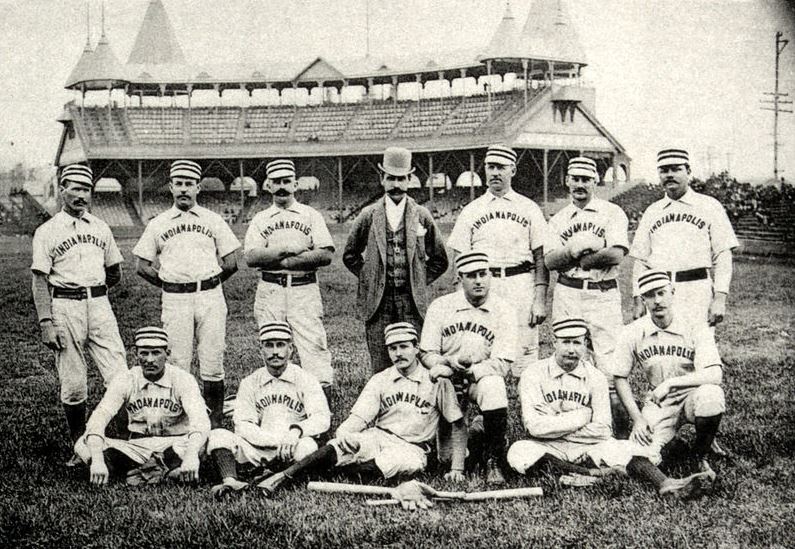
Like the birth of the national pastime itself, the origins of baseball in the city of Indianapolis are now lost. The earliest printed record of a ballgame within the city limits appeared in the on July 19, 1867. Two amateur clubs from Indianapolis shared a doubleheader on the Camp Burnside grounds (see ). with a team from Lafayette and the Washington Nationals, the most famous touring amateur ballclub of the time. Two years later, the Cincinnati Red Stockings became the nation’s first professional team, but Indianapolis did not field its own pro team until the centennial summer of 1876. The Indianapolis Blues, as they were known, joined the organized International League the next season but also occasionally played and defeated teams from the more prestigious National League. The star pitcher for this first Indianapolis professional outfit, Edward “The Only” Nolan, earned his nickname by hurling every contest. The Blues soon disbanded, but Indianapolis fielded another pro team in the fledgling American Association in 1884. Appropriately labeled the Hoosiers, they played most home games at the Seventh Street grounds but held Sunday games outside the city limits at the Bruce Grounds to avoid the citywide ban on Sunday sporting events.
Major league status arrived when the Hoosier ballclub joined the established National League for three seasons between 1887 and 1889. A light-hitting ballclub wracked by player dissension, the Hoosiers finished last in 1887 and only barely edged out Washington to avoid the cellar the following two summers. The decade of the “Roaring Nineties” witnessed seven improved seasons in the ambitious Western League, presided over by ex-sportswriter and creative baseball entrepreneur Ban Johnson. When Johnson’s league expanded eastward in 1900 and renamed itself the American League, the Indianapolis entrant remained long enough to enjoy one final season and finished runner-up behind a Chicago club managed by Charles Comiskey and a Milwaukee outfit piloted by a youthful Connie Mack.
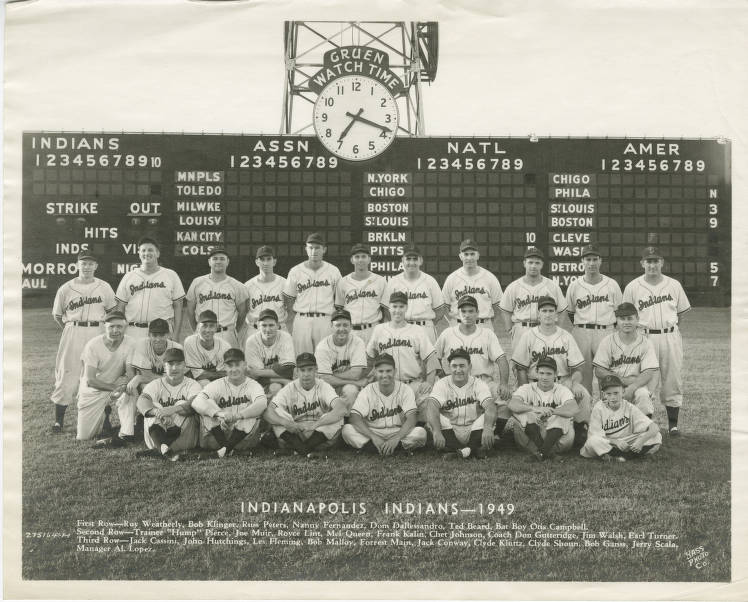
In 1902, as Major League Baseball launched its modern century, Indianapolis was left behind but formed a new team—the Indianapolis Indians—which became a charter member of the American Association. However, this third relationship with a fledgling professional league would be long and prosperous. Except for a 5-year span when the circuit collapsed (International League 1963, Pacific Coast League 1964-1968), the Indians remained a member of the American Association up until the league finally disbanded after the 1997 season. At that time, Indianapolis rejoined the International League. When Major League Baseball restructured the minor leagues in 2021, Indianapolis was assigned to the Triple-A East, which became known as the International League the following year. During its history, the team has been affiliated with several major league parent clubs, including the Cincinnati Reds (1939-1940, 1961, 1968-1983, 1993-1999); Boston Braves (1946); Pittsburgh Pirates (1947-1951, 2005-2030); Cleveland Indians (1952-1956); Chicago White Sox (1957-1959, 1962-1967); Philadelphia Phillies (1960); Montreal Expos (1984-1992); and Milwaukee Brewers (2000-2004).
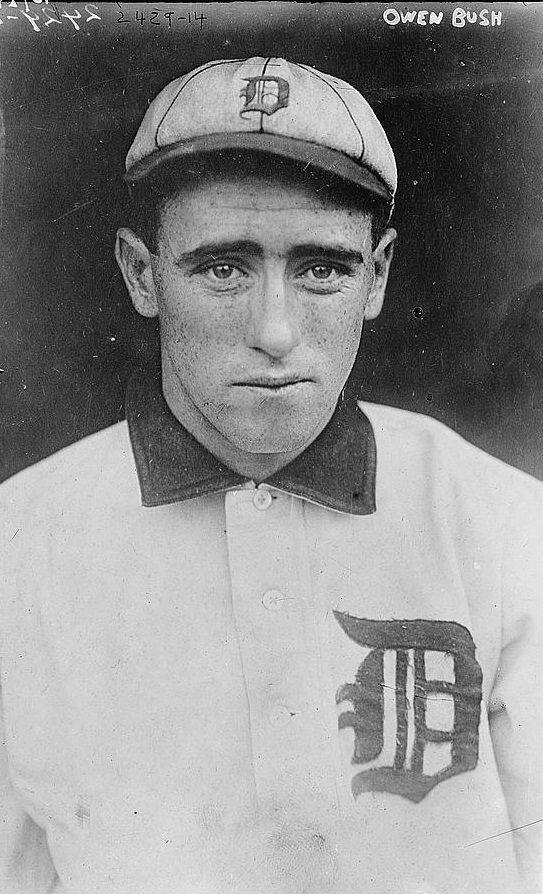
View Source
The 1950s brought great changes to the team and its relationship to the city. Although Jackie Robinson had broken the color barrier in minor league baseball in 1946 and in Major League Baseball in 1947, the Indianapolis team remained segregated until 1952. The Cleveland Indians had signed Larry Doby as the first Black player in the American League soon after the Dodgers signed Robinson and had several Black players in their system by 1952. Thus, when they became the parent team, Cleveland brought Indianapolis the team’s first two Black players: Al Smith and Dave Pope, drawing new fans to the stadium. However, after a few unsuccessful years on the field, Cleveland threatened to sell the team.
The Indianapolis community rallied and formed Indians, Inc., with fans purchasing over 20,000 shares of stock at $10 each to save their team. The team’s former owner was named franchise president.
An Indianapolis native, Donie Bush was among the most prominent figures in the history of Indianapolis baseball. One of the best defensive shortstops of his era, he played in the Major Leagues for the Detroit Tigers (1908-1921) and Washington Senators (1921-1923) but often brought teams of “all stars” home to Indianapolis for post-season exhibition games. After retiring as a player, he held a life-long relationship with the Indianapolis Indians, serving as the team’s manager in the heyday 1924-1926 seasons and during the war years of 1943-1944. He also became club owner during the 1940s. On August 30, 1967, the team’s West 16th Street home was formally rechristened to honor the popular manager local fans knew as “Mr. Baseball.”

Through their history, the Indianapolis Indians have played at four different ballparks. They began in 1902 at the original Washington Park at East Washington and Gray Streets, then moved in 1905 to a new, much larger just west of the , where the administrative offices are today. Team owner Norman Perry was also chief officer of the , so in 1930 he installed lights at Washington Park to host the city’s first night game on June 9, 1930. The following year, those same lights were moved to the team’s new stadium on 16th Street. Originally named Perry Stadium, then Victory Field during , and later Bush Stadium, that ballpark served as home of the Indianapolis Indians from 1931-1996, when they moved downtown to their current stadium: new
Over a century of minor league play has brought the city of Indianapolis numerous league titles, a host of famous managers and ballplayers, and one of the richest minor league traditions anywhere. As of 2022, 13 former Indianapolis Indians players and/or managers have been inducted in the National Baseball Hall of Fame, most recently Randy Johnson, Larry Walker, and Minnie Miñoso. Among the legends enshrined in Cooperstown who once managed the Indianapolis Indians, the most noteworthy perhaps was one-time big-league .400 hitter Nap Lajoie, who was a playing manager in 1918 during the twilight of his incomparable career. Others were ex-catchers Ray Schalk (1938-1939) and Al Lopez (1949-1950), plus slugging shortstop Luke Appling (1962). Hall of Famers Grover Cleveland Alexander (1910), Rube Marquard (1908), and Harmon Killebrew (1958) also all served baseball apprenticeships on the minor league field in Indianapolis.
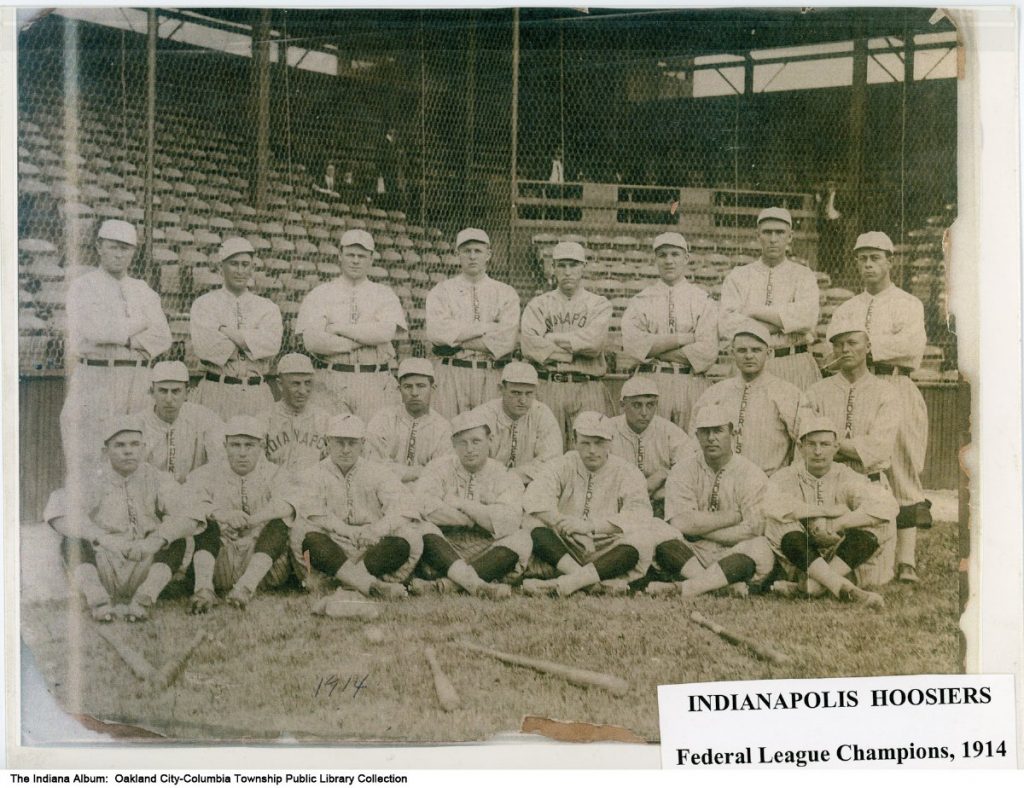
Against the backdrop of nearly a century of minor league baseball in Indianapolis, other professional baseball clubs would also call the city home. Nearly forgotten are two spectacular seasons enjoyed by baseball’s only legitimate third major league of the 20th century—the upstart Federal League, which was a minor league in 1913 and a major league in 1914. Led by star pitcher Cy Falkenberg and batting hero Bennie Kauff (labeled “The Ty Cobb of the Federal League”), Indianapolis provided a major chapter within the Federal League drama. For two mostly rocky seasons, the Indianapolis ballclub (again called Hoosiers or even Hoosierfeds) waltzed away with the league crown. But after only its second season, the young circuit was already crumbling from within, and despite two straight pennants, the Hoosier ballclub was barely solvent because they had to compete for fans with the equally attractive and more established American Association Indians and the , one of the top Black professional teams in the nation. A Federal League realignment transferred the financially shaky Indianapolis franchise to Newark, New Jersey, for the league’s final campaign in 1915. During their brief stay in Indianapolis, the Hoosiers played at Federal League Park (also known as Greenlawn Park), which stood on the site where the soccer team announced plans to build a stadium in 2023.
After the Hoosierfeds left the city, their still-new concrete and steel stadium provided occasional home grounds for another top professional team—the Indianapolis ABCs. Because of a so-called “gentleman’s agreement,” organized professional baseball became racially segregated in the 1880s and remained so until 1947. Segregation forced Black players to form their own teams and develop their own leagues. Around 1900, Indianapolis already had a significant Black population, so many informal teams appeared on neighborhood sandlots, and some began to form an identity around organizations like and local businesses. One of the strongest Black teams, the Indianapolis ABCs started as a factory club at the American Brewing Company around the turn of the century, but by 1914, it was fully professional and managed by , one of the best early Black baseball managers. In 1920, the ABC’s became a charter member of the new Negro National League and hosted the league’s first game at Washington Park, on May 2, 1920. One star of the team was Indianapolis native and future Hall of Famer .
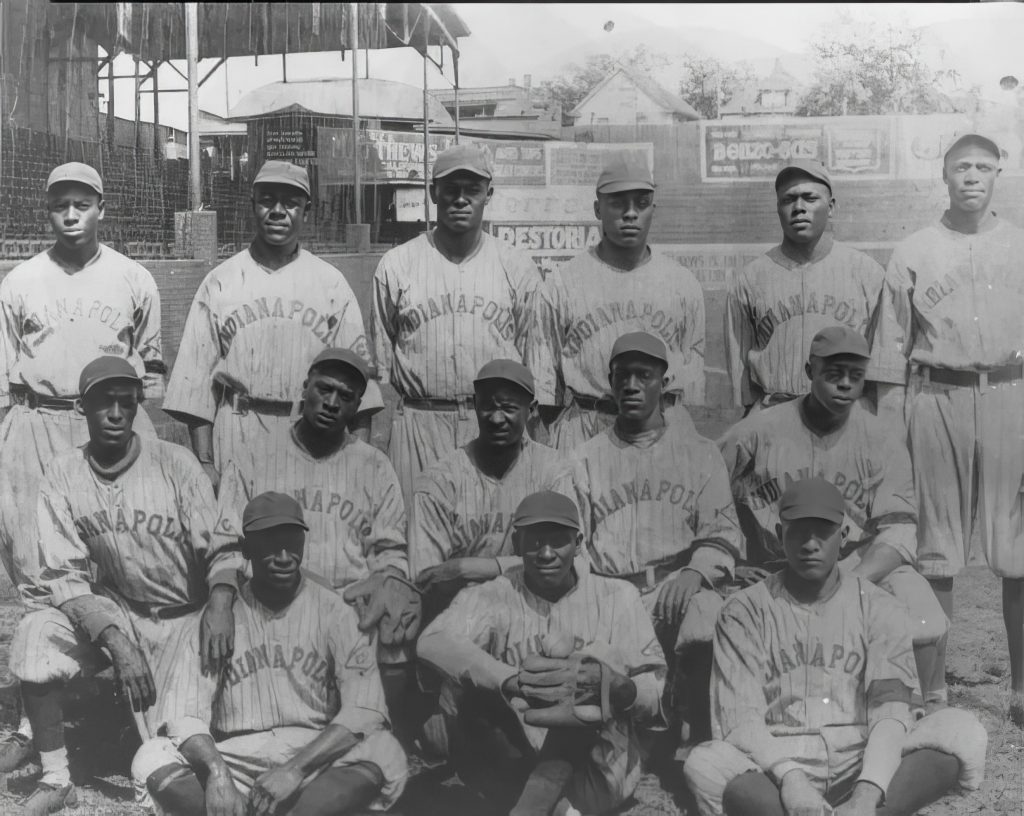
The ABCs were the first of several teams to represent Indianapolis in the Negro Leagues, but perhaps the most well-known was the . Originally called the Ethiopian Clowns and based in Miami, Florida, this was a barnstorming team, meaning it did not have a home field and just traveled to play games on the road. The clowning concept grew out of necessity to bolster sagging attendance. Many teams were adding novel attractions to their games, but the Clowns were the ultimate champions of such efforts, blending minstrel show stunts with baseball, with players often wearing grass skirts and painting up their bodies to appear as African natives. It was a team as devoted to showmanship and on-field clowning as to serious diamond play—a baseball equivalent of basketball’s Harlem Globetrotters. However, seeking more legitimate play in the 1940s, the team took the name Indianapolis Clowns, toned down many of the pranks, and presented stronger teams to gain admittance to the Negro American League. Of course, clowning and their famous “shadow ball” act remained part of the pre-game show.
Some remarkable players appeared with the Indianapolis Clowns, including future home run king Henry Aaron, who signed with them as a teenage shortstop in November 1951 and played with the team on the road for a few months in 1952. In 1953, after Aaron had gone to the minors for the Milwaukee Braves, the Clowns signed Toni Stone, the first female player in the Negro Leagues. While admittedly a gate draw, she was talented enough to bat .243 while appearing in approximately 50 of the Clowns’ 175 games that season. The following season, Stone was with another team, but the Clowns signed two other female players: Connie Morgan and pitcher Mamie “Peanut” Johnson. They also hired a new manager—Oscar Charleston, who led the team to win the Negro American League pennant.
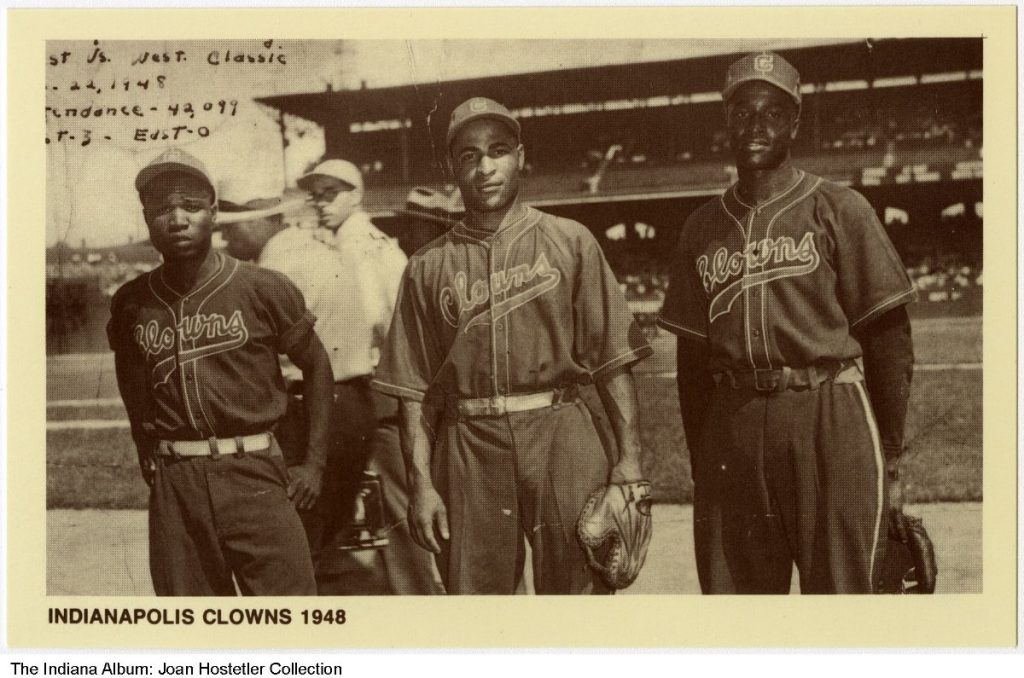
Following the demise of the Negro League structure, the Indianapolis Clowns continued their barnstorming show around the nation into the early 1970s.
Besides supporting its own teams, Indianapolis has also had a place in international baseball, hosting the baseball tournament. As expected, a powerhouse Cuban national team was the eventual gold medal winner, but not before a packed Bush Stadium witnessed a dramatic ninth-inning comeback 6-4 triumph by team USA in a preliminary round game, which provided the Cubans their first Pan Am Games defeat in 20 years.
While other games have won over many Hoosiers’ loyalties, baseball remains a central part of Indianapolis sport culture. Victory Field has become a cornerstone of downtown redevelopment, and on summer nights, crowds cheer on the hometown team within a few blocks of where a century earlier crowds cheered for the Indianapolis Indians, Hoosierfeds, and Indianapolis ABC’s at Washington Park and Federal League Park.
FURTHER READING
- Madden, W. C. . Baseball in Indianapolis. Arcadia Publishing Inc., 2003. https://search.worldcat.org/en/title/1163477859.
CITE THIS ENTRY
APA:
Strecker, G. (2023). Baseball. Encyclopedia of Indianapolis. Retrieved Jan 6, 2026, from https://indyencyclopedia.org/baseball/.
MLA:
Strecker, Gerilyn. “Baseball.” Encyclopedia of Indianapolis, 2023, https://indyencyclopedia.org/baseball/. Accessed 6 Jan 2026.
Chicago:
Strecker, Gerilyn. “Baseball.” Encyclopedia of Indianapolis, 2023. Accessed Jan 6, 2026. https://indyencyclopedia.org/baseball/.

Help improve this entry
Contribute information, offer corrections, suggest images.
You can also recommend new entries related to this topic.